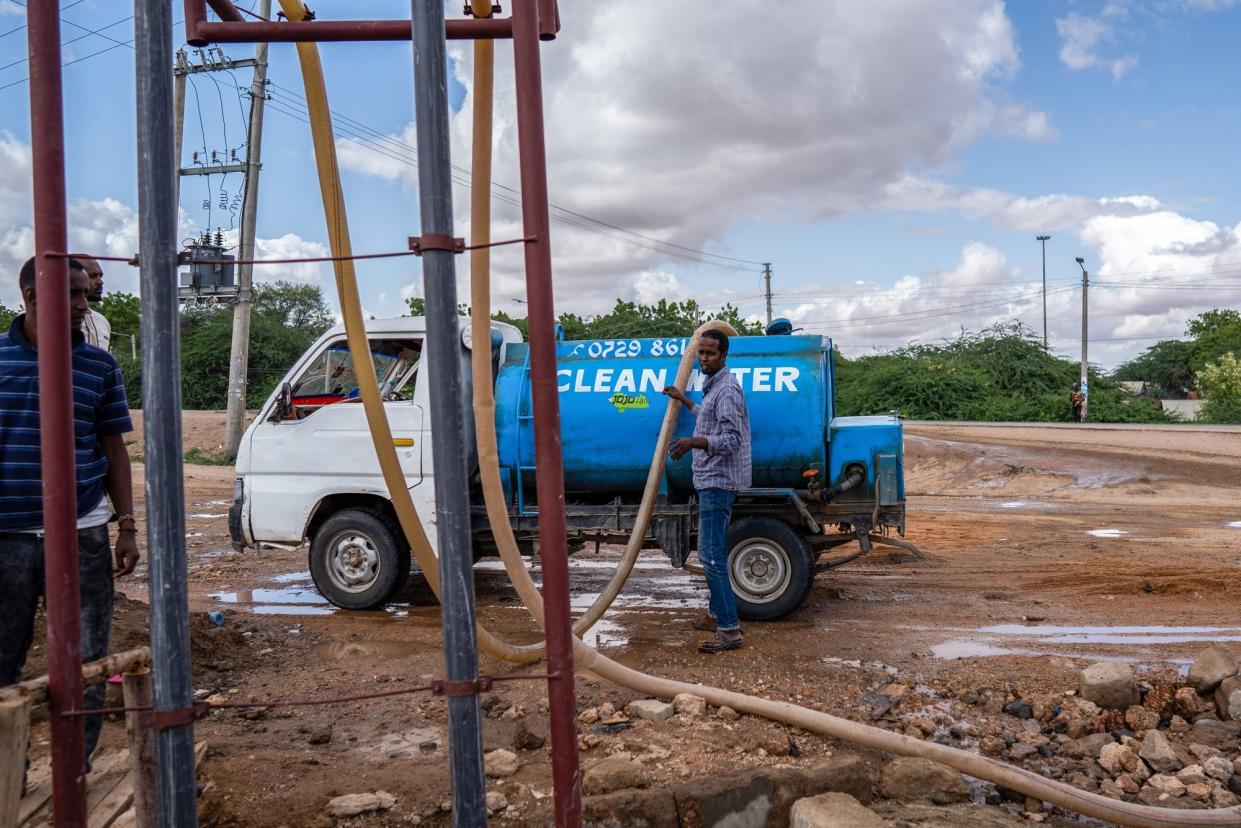Kenyan Economic Growth Slows on Drought, Pre-Election Jitters

(Bloomberg) -- Kenya’s economic growth slowed for a fourth straight quarter as its worst drought in at least 40 years and pre-election jitters weighed on output.
Most Read from Bloomberg
Home Flippers Get Burned by US Housing Market’s Sudden Slump
US Core Inflation Seen Returning to 40-Year High as Rents Rise
Gross domestic product increased by 5.2% from a year earlier in the second quarter, down from a 6.8% gain in the previous three months, the Kenya National Bureau of Statistics said in an emailed statement Tuesday. That’s the slowest pace of expansion since the first quarter of last year, when restrictions to contain the coronavirus pandemic weighed on the economy. The median of four economists’ estimates in a Bloomberg survey was for growth of 5%.
Agriculture, Kenya’s biggest economic sector and employer, contracted for a third straight quarter. A prolonged drought has left almost 5.5 million people facing hunger, according to the United Nations, as agricultural output declines.
The drought is also fanning inflation that’s at a five-year high and constraining consumer spending together with soaring energy and grain prices stemming from a weaker shilling, Russia’s war with Ukraine and the lingering effects of Covid-19 lockdowns.
A broad-based loss in momentum in sectors such as accommodation and restaurants, other services and real estate, partly driven by uncertainty about the nation’s Aug. 9 elections, also stymied output.
Read: Kenya Second Quarter GDP: By Category (Table)
Joe Eshun, Chief Executive Officer Deloitte in East Africa, earlier this year predicted that uncertainty about the election would manifest in reduced economic activity, with foreign and local investment declining, as investors adopted a “wait and see” approach pending the outcome of the vote.
The jitters may also weigh on growth in the third quarter. An index measuring business sentiment has been below 50, signaling a deterioration in private sector activity, for two of the three months in the quarter and plunged to its worst level in more than a year in August as election disruptions added to sustained declines in output.
The negative mood that turned in September may further brighten in the final quarter, after Kenya’s Supreme Court upheld William Ruto’s victory, dismissing his rival Raila Odinga’s claims that the vote was marred by rigging and irregularities.
Surveys conducted by the central bank ahead of its monetary policy committee meeting last month revealed stronger optimism about business activity and economic growth prospects for the rest of 2022 due to renewed investor confidence after the elections.
Still, the US Federal Reserve’s resolve to rein in sticky inflation that’s prompting unprecedented global monetary tightening, risking recessions and roiling financial markets, a cumulative interest rate increase of 125 basis points this year by the Central Bank of Kenya and Ruto’s call on his administration to slash public spending by at least 9% may impact growth for the rest of 2022. The planned budget cut of 300 billion shillings ($2.5 billion) is equivalent to nearly half of the planned development spending in the fiscal year through June 2023.
Read more: Hawkish Fed May Push World Into Recession, Kenya’s Njoroge Says
Kenya’s Treasury expects the economy to grow 5.5% this year, while the Central Bank of Kenya forecasts expansion of 5.4%.
Most Read from Bloomberg Businessweek
The Twitter Deal Has Pierced Elon Musk’s Reality Distortion Field
Hedge Fund Managers Paid for Stockpicking Genius Aren’t Showing Much of It
The Great Post-Covid Online Shopping Bet Was a Costly Delusion
Twitter Faces Only Bad Outcomes If the $44 Billion Musk Deal Closes
©2022 Bloomberg L.P.


